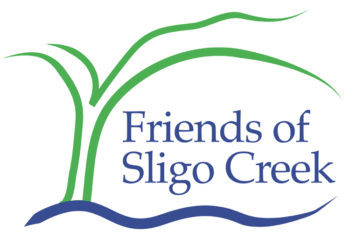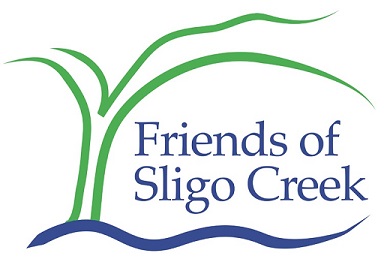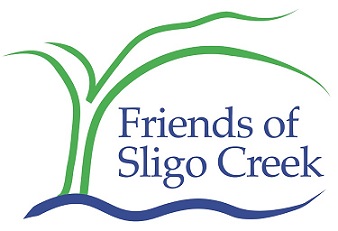Ground-foraging Birds of Sligo
Birds that hunt for food on the ground
Nearly half of all the breeding birds of Sligo (25 of 62) feed primarily or exclusively on the ground, making them especially vulnerable to predation by cats and over-browsing by deer. Four of Sligo’s breeding birds feed exclusively on the ground: Killdeer, American Crow, Ovenbird, and Brown-headed Cowbird. Twenty more feed primarly on the ground.
Especially vulnerable are those birds that both nest and feed near the ground: Killdeer, Mockingbird, Ovenbird, Wood Thrush, and Veery. While the male may sing from high in the trees to establish territory or attract a mate, both male and female carry out all of their nesting and feeding activities in easy range of cats. They depend for cover on the very undergrowth that our overpopulation of deer is destroying.
| FORAGING TECHNIQUE | DIET | ||
|---|---|---|---|
| Primary Technique | Secondary Techniques | ||
| SHOREBIRDS | |||
| Killdeer | forages only on ground | 75% insects, incl. 37% beetles; 21% other inverts such as centipedes, spiders, ticks, worms, snails, crustaceans; 2% weed seeds | |
| DOVES | |||
| Mourning Dove | forages on ground | gleans foliage | 99% seeds, incl. waste seeds from cultivated fields |
| WOODPECKERS | |||
| Red-bellied Woodpecker | bark gleans | gleans foliage also frequently feeds on the ground (ABB) |
insects; also acorns, nuts, fruits, seeds |
| Northern Flicker | forages on ground | hawks; gleans bark | insects, esp. ants (more than any other North American bird); occasionally seeds, acorns, nuts, grain. ABB states that predation from domestic cats (along with pesticides and competition from starlings) suggests continued monitoring of this bird’s population |
| JAYS & CROWS | |||
| Blue Jay | forages on ground | gleans foliage | highly varied; 75% plants (acorns, beech nuts, fruits, weed seeds); also insects, small birds; eggs, grains, fruits |
| American Crow | forages only on ground | omnivore; insects, seeds (esp. corn, fruits, nuts), small mammals, birds, nestlings, bird eggs, reptiles, amphibians, garbage, road kill | |
| Fish Crow | forages on ground | small trees, shrubs | omnivore; crustaceans, small fish, aquatic invertebrates; grain, fruits, small birds & mammals; many birds eggs, esp. herons & egrets |
| WRENS | |||
| Carolina Wren | forages on ground | gleans foliage & bark | insects, esp. ants, bees, wasps; in in winter, poison ivy & bayberry berries |
| House Wren | forages on ground | gleans foliage | insects, esp. bugs, grasshoppers, crickets, locusts, moths, caterpillars, beetles |
| THRUSHES | |||
| Veery | forages on ground | swoops; gleans foliage | insects, esp. beetles, ants, caterpilars, grasshoppers, spiders |
| Wood Thrush | forages on ground | foliage gleans | mostly insects, incl. spiders; fruit often over one-third of diet |
| American Robin* | forages on ground | gleans foliage | insects; plus earthworms, snails; variety of fruits & seeds; young feed exclusively worms & insects |
| MIMICK THRUSHES | |||
| Gray Catbird | forages on ground | gleans foliage | about 50% of diet is insects, esp. crickets, grasshoppers, beetles, ants, caterpillars; also fruits, berries, grapes; young feed almost 100% insects |
| Northern Mockingbird | forages on ground | gleans foliage | in summer, primarily insects, incl. beetles, ants, bees, wasps, grasshoppers, sowbugs; also crayfish; berries in winter |
| Brown Thrasher | forages on ground | gleans foliage | insects, incl. beetles, grasshoppers, ants; also small vertebrates, berries, fruits, nuts; ABB says its ground feeding in open areas makes it vulnerable to pesticides |
| STARLINGS | |||
| European Starling | forages on ground | gleans foliage | insects, other invertebrates, berries |
| WOOD WARBLERS | |||
| Ovenbird | forages only on ground | insects, incl. earthworms, beetles, crickets, ants | |
| Kentucky Warbler | forages on ground | gleans foliage, rarely more than 3′ up | insects among leaves & debris, under roots & logs; plus a few berries |
| TANAGERS, CARDINALS & ALLIES | |||
| Northern Cardinal | forages primarily on ground | insects in warm months; mostly seeds in winter; young fed grubs, other insects | |
| Indigo Bunting | gleans foliage | forages on ground | caterpillars, beetles, grasshoppers; some grains & fleshy fruits |
| EMBERIZINE SPARROWS & ALLIES | |||
| Eastern Towhee | forages on ground | gleans foliage | mostly insects, incl. beetles, moths, caterpillars, grasshoppers, crickets, ants, bees; by scratching at dead leaves; also many ragweed seeds; some berries |
| Field Sparrow | forages on ground | gleans foliage | 50% insects, esp. beetles, grasshoppers, caterpillars, plus few spiders; also seeds of forbs & grasses; young fed 100% insects & spiders |
| Song Sparrow | forages on ground | gleans foliage | in spring, 54% plant food; in fall, 92% plant food, in fall, incl. seeds of grasses & forbs; in spring & summer, 40% insects; some berries |
| ICTERIDS | |||
| Common Grackle | forages on ground | gleans foliage | insects, crustaceans, other inverts, fish, small verts, bird eggs, nestlings; fruit, grain, grass & forb seeds, acorns, nuts; young fed 75% insects & spiders; steals food from other ground feeders, esp. robins |
| Brown-headed Cowbird | forages only on ground | insects, incl. spiders; few snails; grain, grass, & forb seeds | |
| FINCHES & OLD WORLD SPARROWS | |||
| House Finch | forages on ground | gleans foliage | more than 90% seeds, incl. sunflower & weed seeds; fruits; feeds young almost entirely seeds |
| American Goldfinch | gleans foliage | forages on ground | in spring, animal food 50% of diet, esp. aphids & caterpillars; in other seasons, almost no animal food, instead seeds of deciduous trees (esp. sweet gum) and of forbs (esp. thistle, ragweed, composites), grasses, floral buds, berries |
| House Sparrow | forages on ground | gleans foliage | 96% plants, esp. corn, wheat, seeds & buds of many trees; nestlings fed mostly insects |
ABB = Atlas of the Breeding Birds of Maryland and the District of Columbia
Data compiled by Michael Wilpers from Chandler Robbins, senior ed., & Eirik Blom, project coordinator,
Atlas of the Breeding Birds of Maryland and the District of Columbia (University of Pittsburgh Press, 1996).
Some information also from Ehrich, Dobkin, & Wheye,
The Birder’s Handbook: A Field Guide to the Natural History of North American Birds (Simon & Schuster, 1988).
Breeding birds of Sligo taken from talk to the Friends of Sligo Creek by Gail Mackiernan, and from her chapter on Sligo Creek
in A Birder’s Guide to Montgomery County, Maryland (Mont. Co. Chapter, Md. Ornithological Society, 2002).


